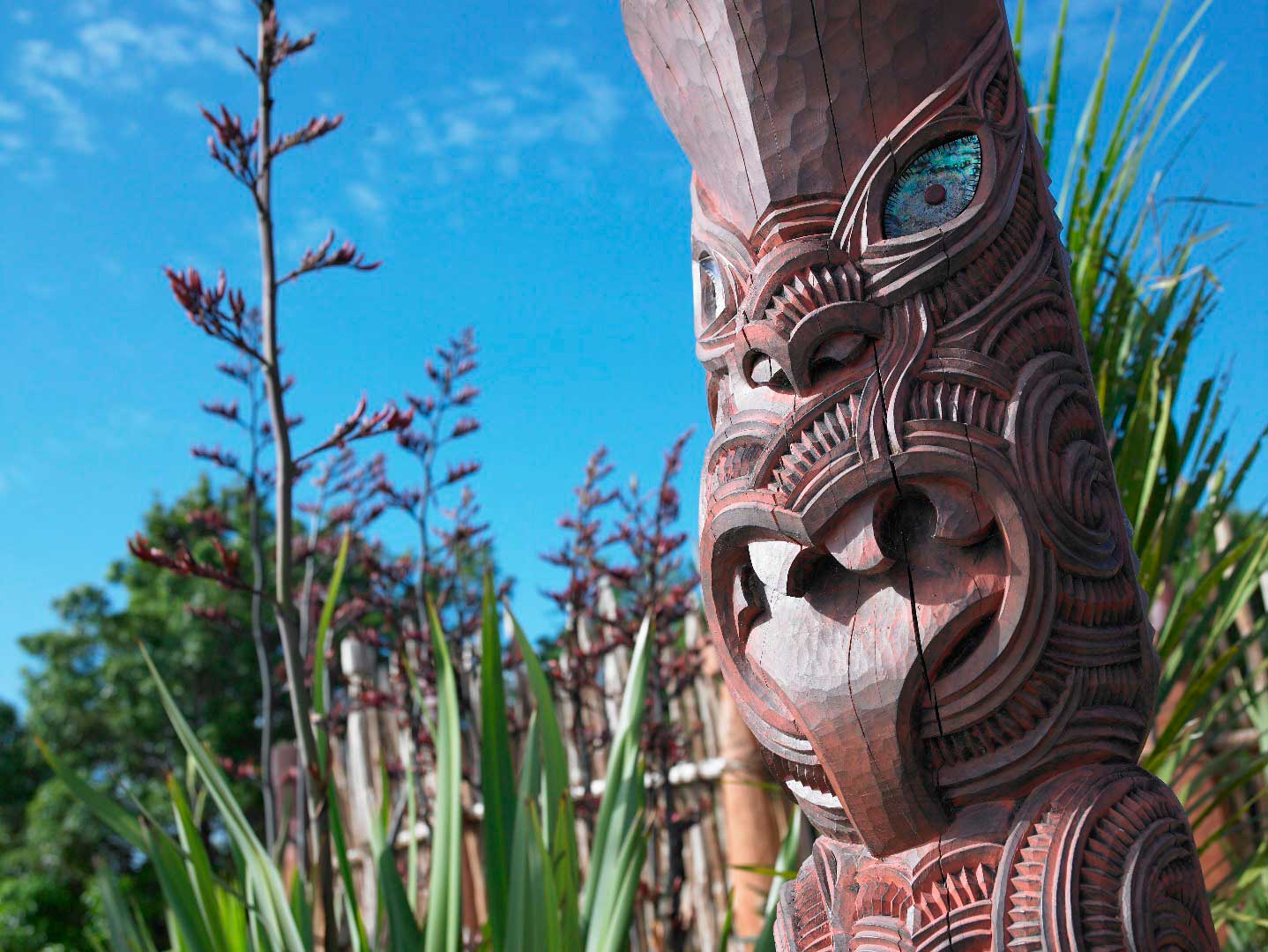A pōwhiri is a formal Māori welcome by the tangata whenua (local people) extended to manuwhiri (visitors). While each iwi (people) has its own unique protocols, the pōwhiri that will commence the NAISA 2019 Conference will observe the protocols of Tainui.
Dress for pōwhiri is conservative-smart. A steward from the host side shall provide a thorough briefing with you before the pōwhiri starts. At this time, at least one kaikōrero (orator) will be selected to represent your group.
The pōwhiri commences via the exchange of karanga performed by kaikaranga on both the tangata whenua and manuhiri sides. The hosts will ensure a kaikaranga will be present to represent manuhiri. Once the host kaikaranga begins to call, manuhiri will begin to approach the venue, after which your steward will direct you to be seated. Typically, the paepae (orators’ bench) is reserved for those intending to speak during the ceremonial oration.

A speaker from the host side will begin the ceremonial oration with a whaikōrero , which normally includes a tauparapara (chant), followed by a mihimihi (traditional greeting) acknowledging, amongst other things, the land, the dead, those present and the purpose of the gathering. Usually a waiata is sung in support following each whaikōrero. Your chosen speaker/s will stand and reply and, similar to the hosts, a waiata will be sung by your group in support of each of your speakers. The order of speaking can vary dependent on many factors; your steward will provide guidance if needed, and s/he will also guide your group in terms of offering koha (gifts) .
Your hosts will conclude the whaikorero, at which time you will be invited to participate in a hongi (the acknowledgement of the breath of life which involves the pressing of noses and touching of foreheads) .
You will then be invited to share food with the tangata whenua and this will conclude the pōwhiri process.
The pōwhiri for NAISA delegates will be held at the Claudelands Event Centre at 8am with doors opening at 715am.
Pōwhiri Parking:
Link busses from central and selected hotels will begin pickups at 7am and will drop you directly outside the venue.
Private vehicles: Please park in Gate 1b off Heaphy Terrace or Gate 3 off Brooklyn Rd.
Hamilton Taxis: Please let your driver know you are with NAISA and dropped directly outside the venue.

Karanga: A ceremonial call of welcome to visitors onto a marae, or equivalent venue, at the start of a pōwhiri. The term is also used for the responses from the visiting group to the tangata whenua ceremonial call. Karanga follow a format which includes addressing and greeting each other and the people they are representing and paying tribute to the dead, especially those who have died recently. The purpose of the occasion is also addressed. Skilled kaikaranga are able to use eloquent language and metaphor and to encapsulate important information about the group and the purpose of the visit (https://maoridictionary.co.nz).
Kaikaranga: Caller - the woman (or women) who has the role of making the ceremonial call to visitors onto a marae, or equivalent venue, at the start of a pōwhiri. The term is also used for the caller(s) from the visiting group who responds to the tangata whenua ceremonial call. Traditionally this role was based on one's status within the hapū or whānau, the eldest sister normally being given the role. Skilled kaikaranga are able to use eloquent language and metaphor and to encapsulate important information about the group and the purpose of the visit (https://maoridictionary.co.nz).

Whaikōrero: Formal speeches usually made by men during a pōwhiri and other gatherings. Formal eloquent language using imagery, metaphor, whakataukī, pepeha, kupu whakaari, relevant whakapapa and references to tribal history is admired. The basic format for whaikōrero is:tauparapara (a type of karakia); mihi ki te whare tupuna (acknowledgement of the ancestral house); mihi ki a Papatūānuku (acknowledgement of Mother Earth); mihi ki te hunga mate (acknowledgement of the dead); mihi ki te hunga ora (acknowledgement of the living); te take o te hui (purpose of the meeting). Near the end of the speech a traditional waiata is usually sung (https://maoridictionary.co.nz).
Waiata: Each speech is followed by a waiata. The waiata is an act of profound support for the speech and the orator… The greater the oratory and the greater the sweetness of the waiata, the greater is the mana of the group enhanced (https://www.iod.org.nz).
https://www.iod.org.nz

Koha: An example of the reciprocity which is a common feature of much Māori tradition. The koha reflects the mana of both the giver and the recipient. The last kaikōrero for the manuhiri will lay the koha (gift) on the marae indicating to tangata whenua that the manuhiri speakers have finished. A Karanga from the tangata whenua will be acknowledged and the koha picked up by the tangata whenua (https://www.iod.org.nz).
Hariru/Hongi: The manuhiri will be invited to physically greet the tangata whenua through hariru and hongi (pressing of nosess and shaking hands), the physical greetings where the manuhiri file past the tangata whenua, hongi and shake hands. The hariru and hongi remove the tapu that existed between the two groups and the two groups are now noa (free from tapu). The process of Pōwhiri lifts the tapu of the manuhiri and consequently they become tangata whenua for the period of their stay (https://www.iod.org.nz).
